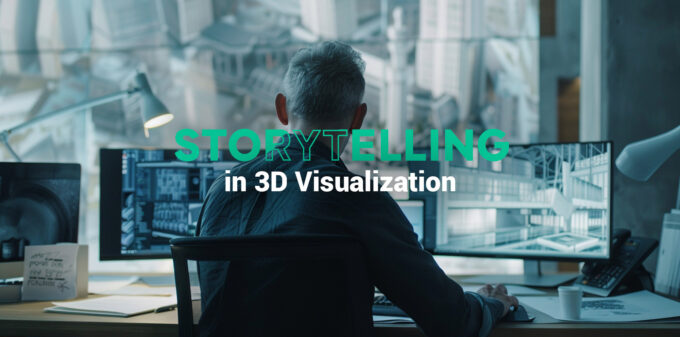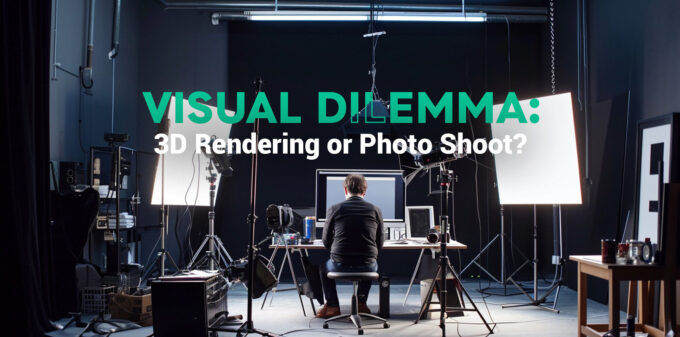
Navigating Success: The Briefing’s Role in 3D Visualization
As professionals in the fields of marketing and 3D visualization, we recognize that the inception of a project often defines its trajectory. A precisely composed briefing serves as the essential foundation of our work, ensuring a smooth process and outstanding results. Let’s delve into why a briefing is essential, what it encompasses, and how it benefits our clients.
What Is a Briefing in the World of 3D Visualization?
A briefing, in the context of 3D visualization, is a meticulously crafted document that acts as the linchpin connecting a client’s vision with the creative process. It’s a structured, detailed blueprint that outlines the project’s objectives, requirements, and expectations. Within this document, the client provides essential information to guide the 3D visualization team in accurately and comprehensively representing their vision in the final renderings.
The briefing is not a mere formality; it’s the foundation upon which the entire project is built. It is a collaborative effort, as it requires clients to articulate their vision, while the 3D visualization team interprets and transforms this vision into a visual reality.
In the absence of a well-prepared briefing, there is room for miscommunication, misunderstandings, and uncertainty. Without clear and concise guidelines, the risk of costly revisions and project delays significantly increases.
Why Do You Need a Briefing?
- Clarity and Vision Alignment: The briefing serves as a conduit for aligning the client’s vision with the creative process. It provides a detailed overview of the project’s goals, ensuring a shared understanding from the project’s outset.
- Efficiency and Resource Management: Without a briefing, the potential for miscommunication is high. This can lead to costly revisions and delays. A well-structured briefing streamlines the project, saving time and resources.
- Precision in Execution: The 3D visualization team’s ability to bring the client’s vision to life hinges on the accuracy of the information provided. A comprehensive briefing eliminates guesswork and ensures that every detail is accounted for.
- Customized Solutions: Each project is unique, and a briefing allows the 3D visualization team to tailor their approach to the client’s specific needs, guaranteeing that the final outcome perfectly aligns with the client’s vision.
What Goes into a Briefing?
Exterior Visualization:
- Property Description: We require current project documents, including floor plans, elevations, sections, and site plans in various formats. If available, a 3D model of the building is ideal.
- Viewpoints: Please specify desired viewpoints for exterior images as well as for day and night scenes. This helps us accurately capture the essence of your project and show it in the best light possible.
- Surroundings: Provide the property’s address and details about the surroundings, such as streets, neighboring structures, and any open space plans.
- Materials and Surfaces: Detailed information on facade materials, colors, and textures is essential. Surface details, such as windows, doors, balconies, and embellishments, should also be included.
- Lighting: Information about natural and artificial lighting is crucial. We can even provide lighting examples for your consideration and make selecting the proper mood easier.
- Additional Requirements: Highlight any specific design elements or features you’d like to emphasize.
Interior Visualization:
- Room Description: Describe the rooms to be visualized and provide project documents, such as floor plans and elevations.
- Viewpoints: Specify desired angles and viewpoints for each room.
- Floor and Wall Finishes: Details about materials, textures, and color choices for walls, floors, doors, and windows are vital. Include mood images as examples of interior design style.
- Furniture and Furnishings: List the furniture pieces, curtains, and decor items to be depicted. Specify style, colors, and materials, or provide mood images for reference.
- Lighting and Atmosphere: Describe the desired lighting ambiance and lighting details. A lighting scheme can also be included.
- Additional Requirements: Mention any specific elements to highlight and the desired atmosphere or mood you wish to convey.
- Reference Images: If available, provide examples or reference images illustrating the desired style or aesthetics.
Concept Development Service: Unlocking Your Vision
Recognizing the challenges that clients often face in allocating time, resources, or acquiring the necessary skills to craft a comprehensive concept for their 3D visualization projects, we’re pleased to present our concept development service.
Our concept development service is tailored to support clients with brilliant ideas but limited resources to fully articulate and structure them. We collaborate closely with you, commencing from the conceptual stage, to breathe life into your vision. Our team of experienced professionals works hand in hand with you to elaborate on your concept, providing the essential framework needed to transform your vision into a tangible plan. This service’s primary objective is to lay a robust foundation for your project, ensuring that it seamlessly aligns with your objectives and expectations.
Conclusion
Briefings are the backbone of successful 3D visualization projects, promoting clarity and accuracy. At the same time, the concept development services act as a supportive tool, freeing clients from the need to delve into intricate details. In combination, these services provide a smooth path to project success, enhance creativity and meet customer expectations.







